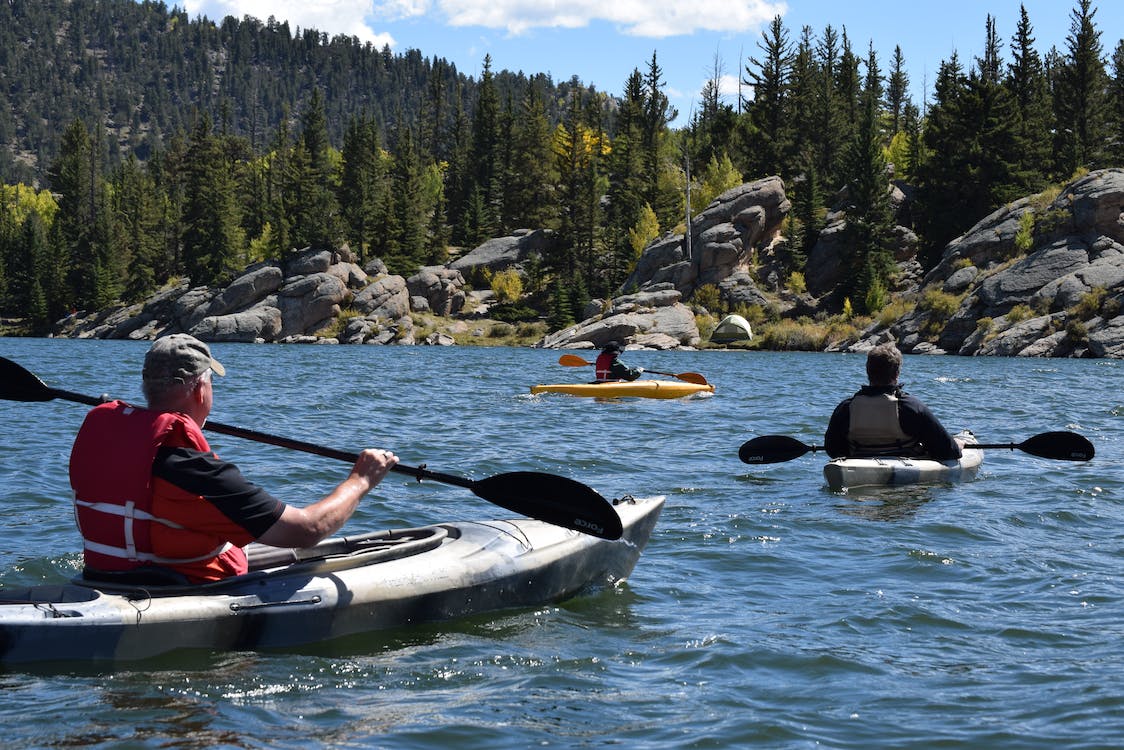Types of Kayaks
Sit-on-Top Kayaks
Sit-on-top kayaks are perfect for beginners due to their user-friendly design. These kayaks provide a stable platform and are easy to get in and out of, making them ideal for leisurely paddling and recreational use.
Recreational Kayaks
If you’re looking to explore calm waters like lakes and slow-moving rivers, recreational kayaks are an excellent choice. These kayaks offer greater stability and a wider design, ensuring beginners can enjoy a relaxed and comfortable paddling experience.
Touring Kayaks
For those with an adventurous spirit, touring kayaks are designed for longer journeys and exploration. Their sleek design allows for faster and more efficient paddling, making them ideal for beginners keen on day trips and extended paddling adventures.
Sea Kayaks
Beginners with an interest in open water kayaking should consider sea kayaks. These specialized kayaks are built to tackle rougher waters and provide excellent tracking and stability. They are a great choice for those seeking a thrilling sea kayaking experience.
Whitewater Kayaks
For the adrenaline junkies, whitewater kayaks are specifically designed for navigating rapids and turbulent waters. Their shorter and more maneuverable structure makes them an exciting choice for beginners keen on whitewater kayaking.
Kayak Construction Materials
Hard-Shell Kayaks
Hard-shell kayaks are available in a variety of materials, such as plastic, fiberglass, or composite materials. While they offer superior performance in the water, they can be heavier and more challenging to transport.
Inflatable Kayaks
On the other hand, inflatable kayaks are constructed with tough and puncture-resistant materials, making them a portable and lightweight option. Ideal for beginners with limited storage space, inflatable kayaks offer ease of transportation without compromising on performance.
Kayak Size and Weight Capacity
Paddler’s Size and Weight
When selecting a kayak, it’s crucial to consider your own size and weight. Larger paddlers may require a kayak with more spacious dimensions and a higher weight capacity to ensure stability and comfort.
Gear and Storage Requirements
If you plan on bringing along a lot of gear, pay attention to the kayak’s storage capacity to accommodate your belongings comfortably.
Kayak Stability and Maneuverability
Primary Stability
For beginners, kayaks with high primary stability are recommended. Primary stability refers to the kayak’s stability when stationary or sitting still, ensuring a lower likelihood of tipping over.
Secondary Stability
While primary stability is crucial, secondary stability is equally essential, especially when leaning or turning the kayak. Kayaks with good secondary stability provide better responsiveness and maneuverability.
Kayak Cockpit Design
Open Cockpit vs. Enclosed Cockpit
The cockpit design is another aspect to consider. Open cockpit kayaks allow for easy entry and exit, providing a sense of freedom during paddling. On the other hand, enclosed cockpits are common in sea kayaks, offering protection from water splashes.
Adjustable Footrests and Seats
To ensure a comfortable paddling position, look for kayaks equipped with adjustable footrests and seats.
Kayak Paddle Options
Paddle Length and Materials
The length of your paddle is determined by your height and the width of the kayak. Additionally, consider the paddle’s material, as it can impact its weight and overall performance.
Shaft Shape and Blade Design
The shape of the shaft and blade design also plays a role in your paddling efficiency and comfort. Choose a paddle that aligns with your paddling style and personal preferences.
Essential Kayaking Gear
Personal Flotation Device (PFD)
Safety should always be a top priority. Ensure you have a properly fitted Personal Flotation Device (PFD) for every kayaking adventure.
Kayak Clothing and Footwear
Dress appropriately for kayaking, considering the weather and water conditions. Wear quick-drying and comfortable clothing, along with suitable footwear for paddling.
Safety Equipment
Carry essential safety equipment, including a whistle, signaling devices, and a first-aid kit, to be prepared for any emergencies.
Kayak Storage and Transportation
Roof Racks and Trailers
Invest in roof racks or trailers to safely transport your kayak to different paddling destinations.
Kayak Carrying Techniques
Learn the proper techniques for carrying your kayak to avoid strain and injury during transportation.
Testing and Trying Out Kayaks
Renting vs. Buying
If you’re a beginner, consider renting various kayak models to test them out and determine which one best suits your needs before making a purchase.
Test Paddling Different Models
Take advantage of test paddling opportunities to get a feel for different kayak models and their performance on the water.
Maintaining Your Kayak
Cleaning and Storage Tips
Regularly clean your kayak and store it properly to prolong its lifespan and ensure optimal performance.
Regular Inspections and Maintenance
Perform regular inspections to identify any signs of wear or damage and address them promptly through maintenance and repairs.
Kayak Safety Tips for Beginners
Knowing the Water and Weather Conditions
Before embarking on a kayaking journey, always check the water and weather conditions to ensure a safe and enjoyable experience.
Practicing Basic Kayaking Techniques
Learn and practice basic kayaking techniques, including various paddling strokes and self-rescue methods, to enhance your skills and confidence on the water.
Getting Started: Kayaking Destinations for Beginners
Calm Lakes and Ponds
Begin your kayaking adventure in calm and peaceful lakes or ponds to acclimate yourself to the experience.
Slow-Moving Rivers
Explore slow-moving rivers that offer a gentle current and allow you to practice your paddling techniques.
Beginner-Friendly Coastal Areas
If you’re drawn to sea kayaking, opt for beginner-friendly coastal areas with calm waters to ease into the excitement of paddling in open water.
Conclusion
Choosing the right kayak as a beginner is crucial to ensure an enjoyable and safe kayaking experience. Consider your preferences, paddling goals, and the type of waters you plan to explore. Armed with this comprehensive guide, you can confidently select the perfect kayak that aligns with your needs and embark on countless thrilling adventures on the water.

